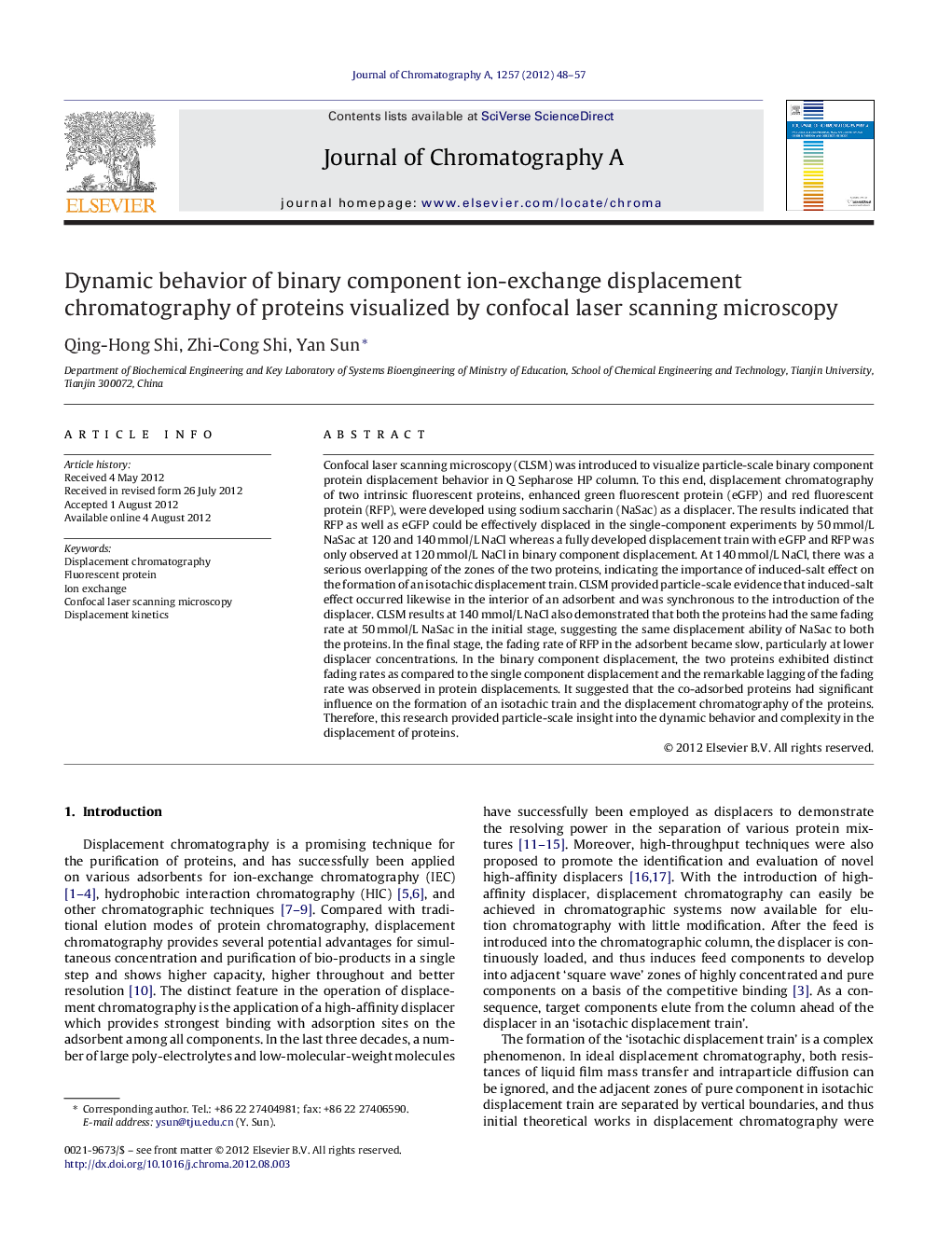| Article ID | Journal | Published Year | Pages | File Type |
|---|---|---|---|---|
| 1202011 | Journal of Chromatography A | 2012 | 10 Pages |
Confocal laser scanning microscopy (CLSM) was introduced to visualize particle-scale binary component protein displacement behavior in Q Sepharose HP column. To this end, displacement chromatography of two intrinsic fluorescent proteins, enhanced green fluorescent protein (eGFP) and red fluorescent protein (RFP), were developed using sodium saccharin (NaSac) as a displacer. The results indicated that RFP as well as eGFP could be effectively displaced in the single-component experiments by 50 mmol/L NaSac at 120 and 140 mmol/L NaCl whereas a fully developed displacement train with eGFP and RFP was only observed at 120 mmol/L NaCl in binary component displacement. At 140 mmol/L NaCl, there was a serious overlapping of the zones of the two proteins, indicating the importance of induced-salt effect on the formation of an isotachic displacement train. CLSM provided particle-scale evidence that induced-salt effect occurred likewise in the interior of an adsorbent and was synchronous to the introduction of the displacer. CLSM results at 140 mmol/L NaCl also demonstrated that both the proteins had the same fading rate at 50 mmol/L NaSac in the initial stage, suggesting the same displacement ability of NaSac to both the proteins. In the final stage, the fading rate of RFP in the adsorbent became slow, particularly at lower displacer concentrations. In the binary component displacement, the two proteins exhibited distinct fading rates as compared to the single component displacement and the remarkable lagging of the fading rate was observed in protein displacements. It suggested that the co-adsorbed proteins had significant influence on the formation of an isotachic train and the displacement chromatography of the proteins. Therefore, this research provided particle-scale insight into the dynamic behavior and complexity in the displacement of proteins.
► CLSM was introduced to visualize particle-scale displacement of binary proteins. ► Two native fluorescent proteins were used to establish a novel displacement system. ► Induced-salt effect was synchronous to the application of displacer in particles. ► The research exhibited good relevance between chromatography and CLSM observations.
